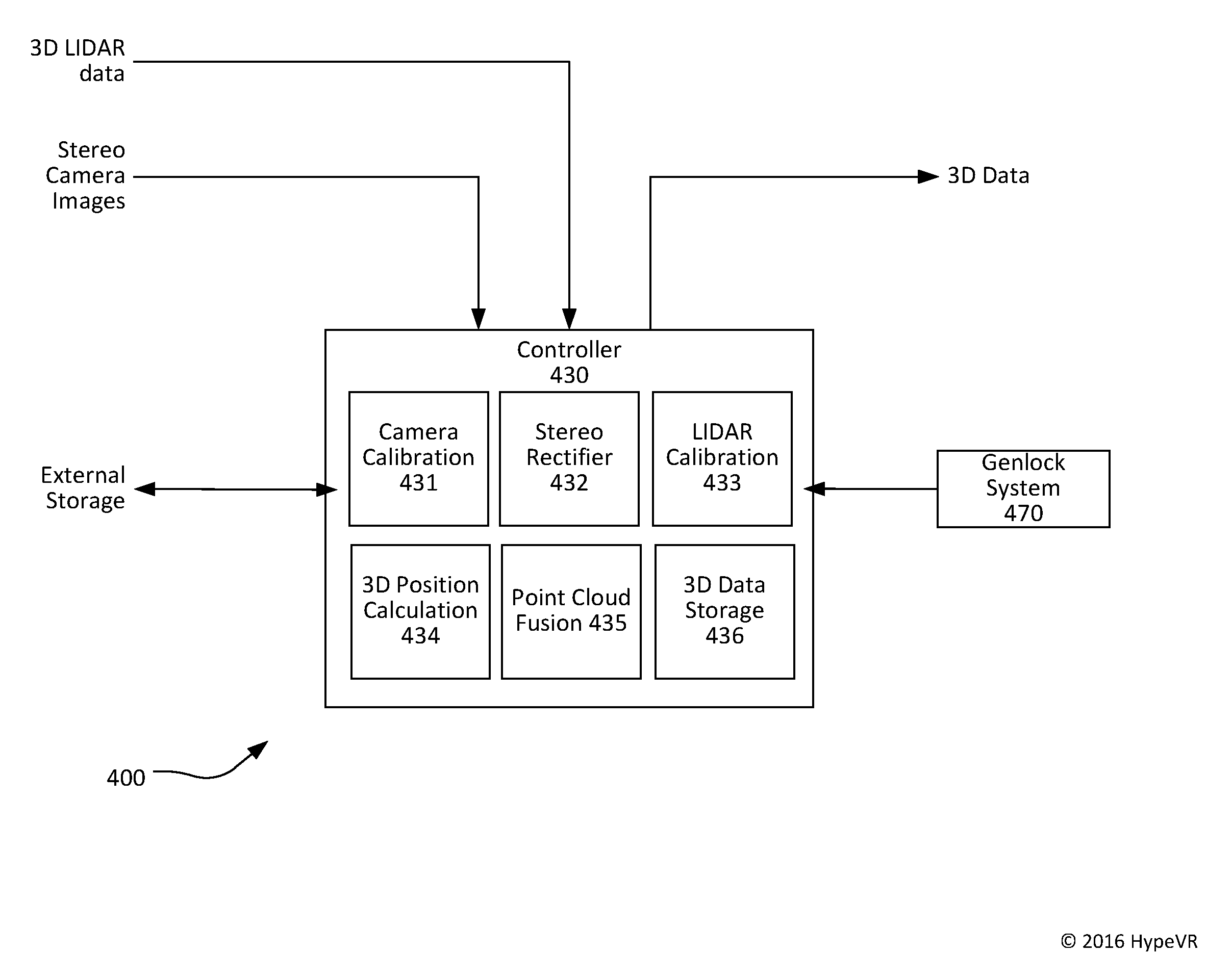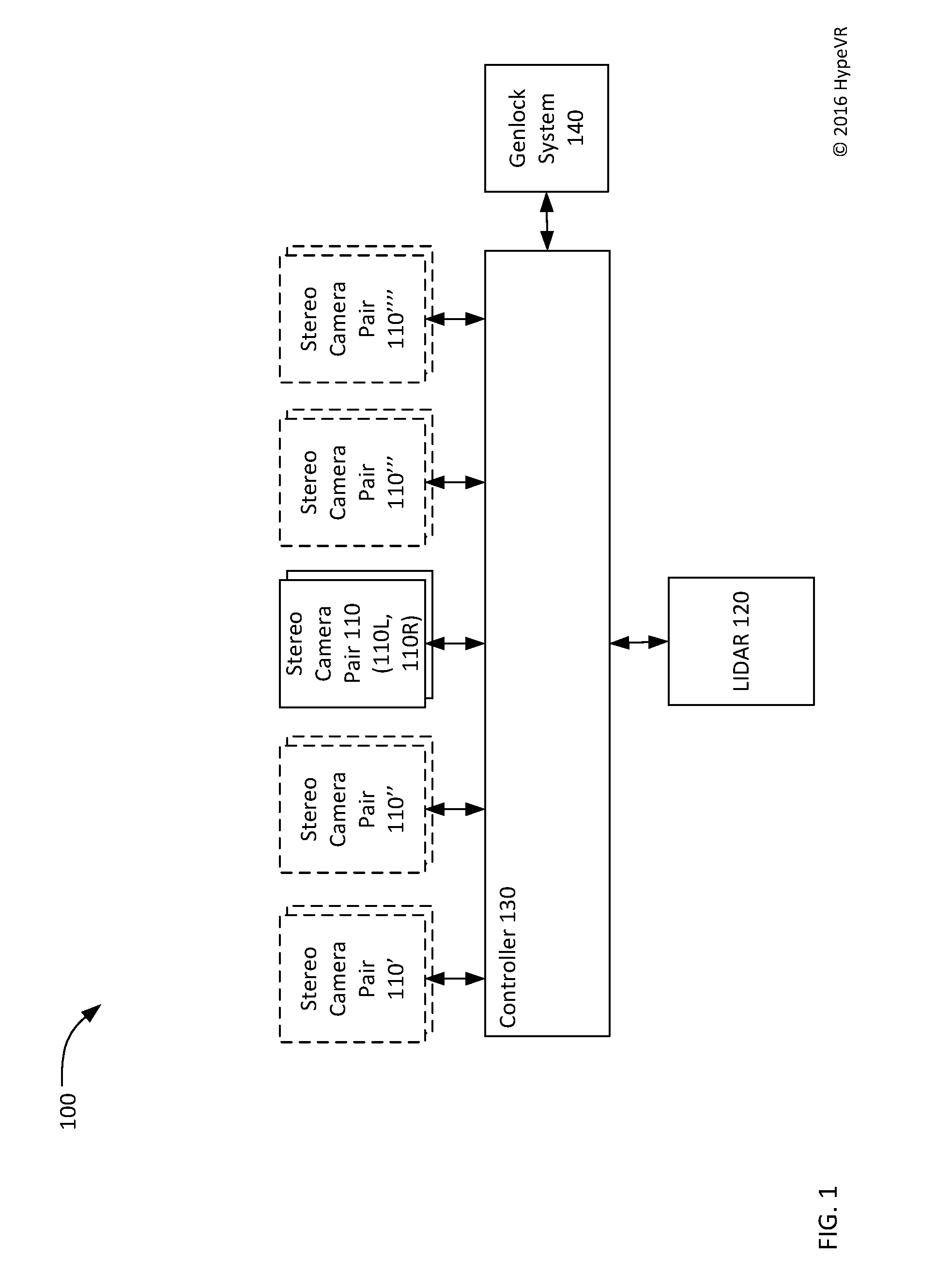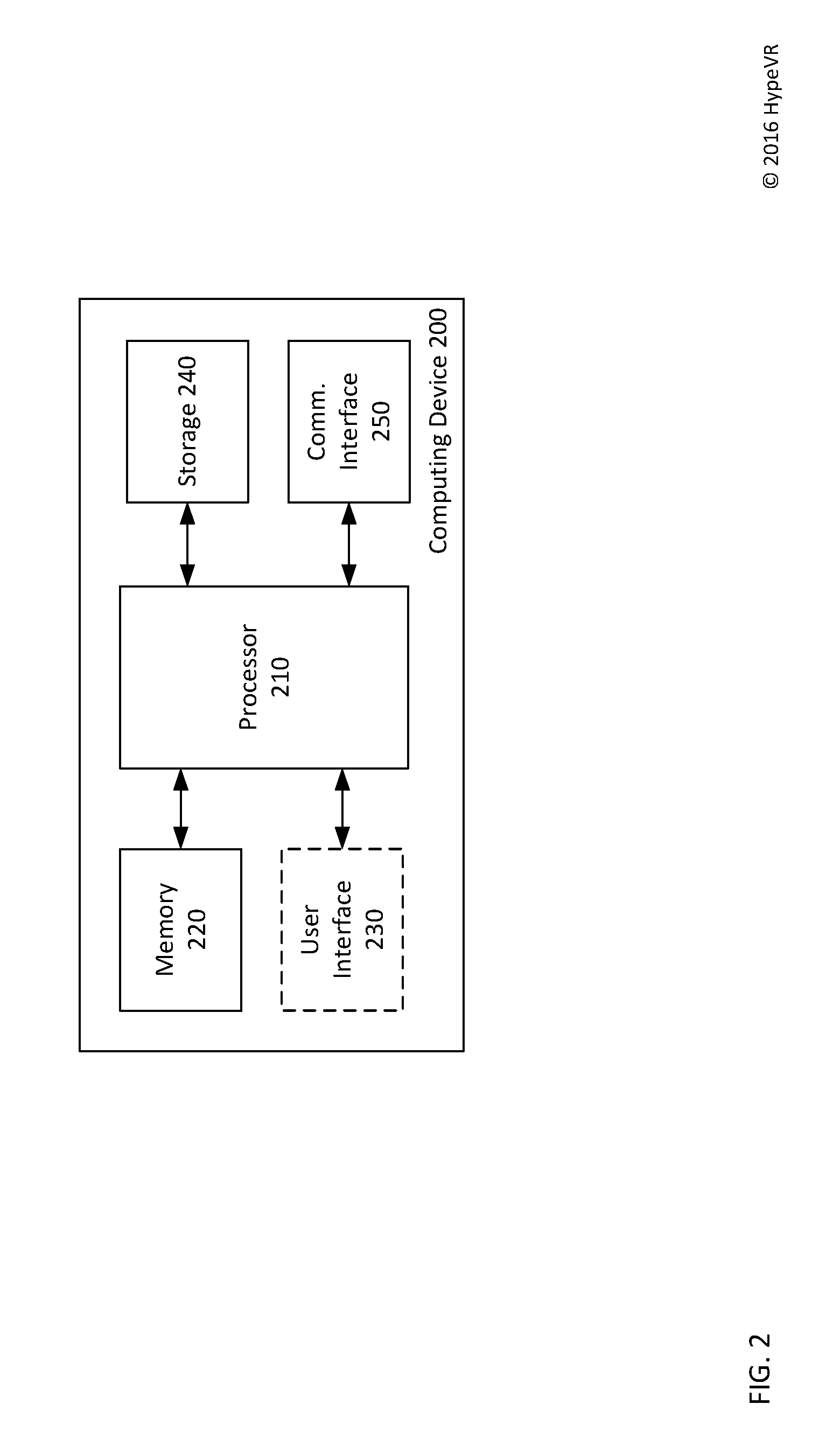Lidar stereo fusion live action 3D model video reconstruction for six degrees of freedom 360° volumetric virtual reality video
a virtual reality video and 3d model technology, applied in the field of three-dimensional video capture, can solve the problems of requiring days or weeks of work, and none of these systems is really suitable for capturing any “live-action, parallax issues
- Summary
- Abstract
- Description
- Claims
- Application Information
AI Technical Summary
Benefits of technology
Problems solved by technology
Method used
Image
Examples
Embodiment Construction
[0025]Description of Apparatus
[0026]Referring now to FIG. 1 is a block diagram of a system 100 for fusion of stereographic images and LIDAR. The system 100 includes at least one stereo camera pair 110, made up of 110L, 110R (with 110L being a left camera and 110R being a right camera). There may be a one or more additional stereo camera pairs, such as stereo camera pairs 110′, 110″, 110″′, and 110″″. The stereo camera pair 110 may be used to create stereo images from which three-dimensional camera data may be derived. As used herein “three-dimensional camera data” means three-dimensional data that is derived from simultaneous images captured by a stereo camera pair.
[0027]The LIDAR 120 is a depth sensing technology that relies upon at least one laser and the detection of reflections from that at least one laser to generate depth maps for three-dimensional spaces. There are various embodiments of LIDARs. Some use a single, scanning laser that moves across a field of view, others rely ...
PUM
 Login to View More
Login to View More Abstract
Description
Claims
Application Information
 Login to View More
Login to View More - R&D
- Intellectual Property
- Life Sciences
- Materials
- Tech Scout
- Unparalleled Data Quality
- Higher Quality Content
- 60% Fewer Hallucinations
Browse by: Latest US Patents, China's latest patents, Technical Efficacy Thesaurus, Application Domain, Technology Topic, Popular Technical Reports.
© 2025 PatSnap. All rights reserved.Legal|Privacy policy|Modern Slavery Act Transparency Statement|Sitemap|About US| Contact US: help@patsnap.com



